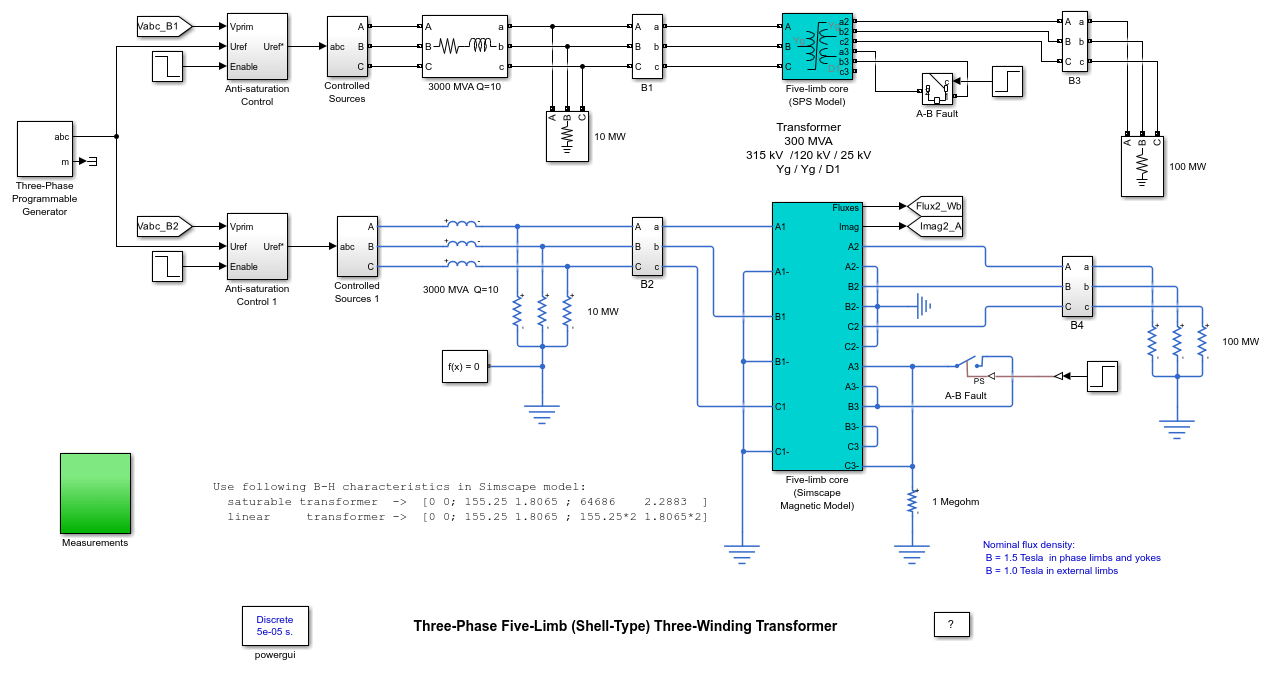Three-Phase Five-Limb (Shell-Type) Three-Winding Transformer
This example illustrates saturation in a Five-Limb Shell-Type transformer and compares the Specialized Power Systems model with a Simscape-based physical model.

Description
The top circuit uses SimPowerSystems blocks to implement a 300 MVA, 315 kV/120 kV/25 kV, Yg/Yg/D transformer connected to a 315 kV grid. During unbalanced voltage conditions, contrary to the three-limb transformer, the zero-sequence flux of the five-limb transformer stays inside the steel core and returns through the two external limbs. The natural zero-sequence inductance (without Delta) is very high (L0 > 100 pu). Therefore, except for small current imbalances due to core asymmetry, the behavior of the five-limb shell-type transformer is very similar to that of a three-phase transformer built with three single-phase units.
The bottom circuit implements the same circuit using the Simscape electrical and magnetic foundation libraries. Look under the mask of the Simscape transformer block to see how the magnetic circuit is implemented. Blue blocks represent steel reluctances of the 5 limbs and 8 yokes with specified nonlinear B-H characteristic. Yellow blocks represent reluctances of air paths modeling the winding leakage inductances.
The Three-Phase Programmable Generator block is used to simulate a 1.7 pu overvoltage on phase A (from 0.2 sec to 0.3 sec), producing saturation of phase A. Then, a phase-phase (A-B) fault is applied across the Delta winding at t=0.35 sec. Transformers in both models start with zero initial fluxes. In order to decrease the time required to reach steady-state, Anti-saturation Control blocks are used to quickly force the average fluxes in the three phases to zero.
Observe that voltages, currents, and fluxes produced by the two models are very similar.
